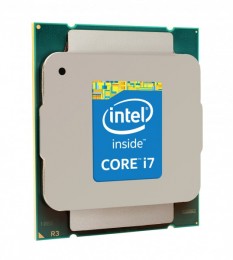 It is often said that a crisis is merely an opportunity in disguise. It is often said but it’s rarely true. However, the steep drop in PC shipments could in fact be good news for AMD.
It is often said that a crisis is merely an opportunity in disguise. It is often said but it’s rarely true. However, the steep drop in PC shipments could in fact be good news for AMD.
Ten years ago AMD taught Intel a costly lesson in the high end, forcing Intel to regain its footing and invest heavily in R&D and manufacturing. As a result Intel squeezed AMD out of the high-end consumer CPU market, relegating it to the mid range and low end.
AMD wasted its opportunity, but eventually it picked up ATI a couple of years after its CPU design peaked. Things looked bright for a moment, just before they went terribly wrong. AMD suffered from poor execution and its high end chips just weren’t good enough to keep up with Intel. The K8 glory days are long gone and AMD is now a different company, it is fabless, but it also has plenty of IP, competitive graphics and very interesting APU and x86 SoC designs.
So how could the weak PC market benefit AMD, especially now that mobile chips are the new black, and AMD hasn’t got any?
Long upgrade cycles are one indicator that the era of “good enough” computing is already here. The average PC is more than four years old, few people need costly high end processors and attention is shifting to low end and mid range silicon. This is what AMD is becoming good at. Its new Jaguar based APUs are brilliant and they are superior to Intel’s current generation of Atoms. Richland based APUs aren’t as competitive, but they offer relatively good value for money and they are making inroads in the ULV market as well. The bad news is that AMD is still suffering from execution problems. Kaveri was supposed to replace Richland later this year, but it has been pushed back to early 2014, along with desktop Jaguar-based Kabini parts. AMD’s propensity for delays makes any forecast extremely difficult.
With very little need for Intel’s high-end x86 chips in the consumer market, gamers and professionals aren’t enough. This is an obvious opportunity for AMD and CEO Rory Read seems to get it. That might explain why AMD is focusing its efforts elsewhere. APUs are just part of the story, they were the logical next step in CPU evolution. AMD’s next big thing is custom chip design. The Xbox One and PS4 are based on Jaguar, with AMD graphics in tow. Now for some geeky figures.
Most people associate Jaguar with cheap and small APUs, but custom console SoCs are neither. Built using TSMC’s 28nm process, the SoC used in the Xbox One actually features eight Jaguar CPU cores, coupled with powerful graphics and plenty of SRAM embedded on the die. They pack around 5 billion transistors, while Intel’s mid-range Haswells are said to feature between 1.4 billion and 1.2 billion, depending on the SKU.
AMD hasn’t forgotten how to do huge, immensely complex chips – it’s just not doing big x86 cores anymore. Its high-end GPUs also have upwards of 4 billion transistors. What’s more, AMD can apply the same custom approach to server parts and it’s also working on ARM based server chips as well. This flexible, modular approach sounds very interesting indeed, but it’s still too early to say whether AMD will put it to good use in server chips, so to speak, whether it will manage to find enough customers for custom parts, as the orders have to be relatively big to justify the expense of developing and producing such chips.
As far as AMD’s graphics business goes, it is doing rather well at the moment. Time and again AMD has proven that it can go toe to toe with Nvidia and win a few rounds. We’ve been looking at a virtual stalemate for the past five years. This year AMD managed to increase its GPU market share, despite the fact that Nvidia won nearly all Haswell notebook design wins. The trouble for Nvidia is that notebook graphics are a dying market. In the consumer space AMD is doing well, while Nvidia still maintains a big lead in high-margin professional graphics. The recent console wins should also help AMD’s consumer GPU business, as developers should find it easier to optimise their games for AMD’s architecture on three different platforms.
The big question is mobile. A couple of months ago Nvidia announced that it would license its Kepler GPU and future GPU IP to third-party ARM SoC builders. AMD has not made the same commitment, but some AMD graphics tech is already used in mobile chips, in the form of Qualcomm’s Adreno graphics. The ARM SoC business will continue to grow and we are bound to see more consolidation. Nvidia has a small presence in the ARM SoC market and if it is willing to license its technology to its own competitors, AMD could and should enter the market as well. It is worth noting that Adreno is running out of steam, as it is based on old AMD/ATI tech. We’re not sure it would make financial sense for Qualcomm to continue development in-house, it might reach out to AMD instead. There is very little overlap between Qualcomm and AMD at the moment, and such a marriage of convenience would make perfect sense. If that happens, AMD could end up with a huge market share in ARM SoC graphics, trumping Nvidia, ARM and Imagination.
AMD is still in a world of trouble, but looking ahead it might actually be in a better position to weather the storm than Intel, at least in the consumer space. High end chips and server parts are still Intel’s turf, although AMD could score some custom server wins in the future. Intel is pushing mobile now and it has a good chance of penetrating the market a couple of years from now, but in reality if AMD starts licensing GPU IP to the likes of Qualcomm, it could make heaps of cash in mobile, with a lot less investment and risk than Intel.











